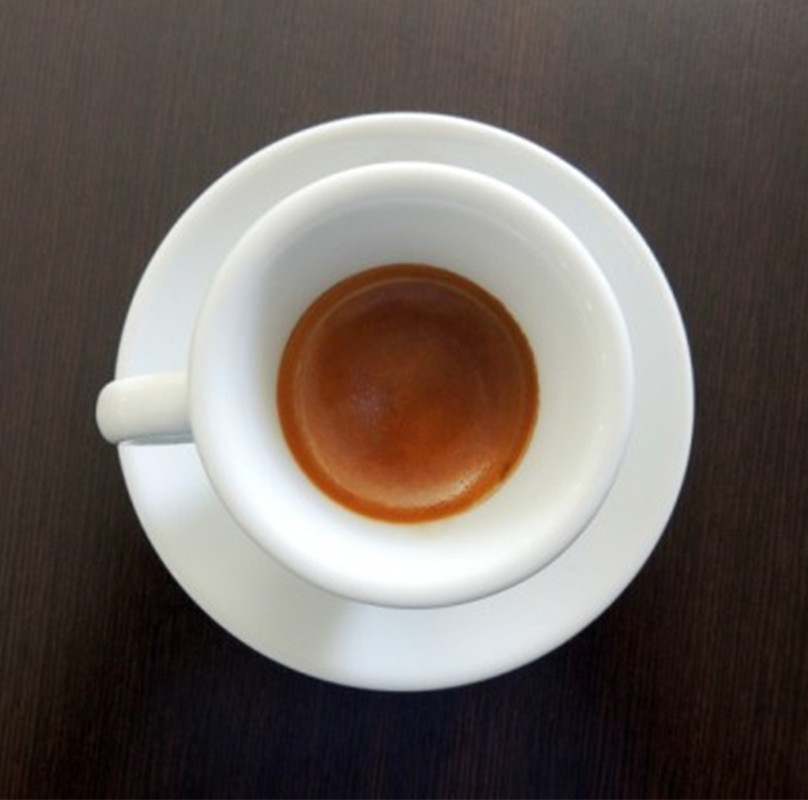The five identities of Italian espresso common sense ESPRESSO
Espresso is Italian, meaning "make it for you right away". The impulse caused by coffee is beyond words. In the eyes of those who play with coffee, Espresso is no longer a simple "espresso". It is a kind of comprehensive coffee, a method of roasting, a kind of coffee brewing, a kind of cooking, but also a kind of life.

Identity 1: mixed coffee
Espresso is an art of integrated coffee that allows people to spend their whole lives studying its recipes. Generally speaking, sun-cured coffee beans are mellow, while water-washed beans are sweeter; 1-2-year-old new beans have lively acidity and taste, while old beans are calm and thick. As for the recipe, such as writing a music concerto, it only depends on the old master's long-term experience and self-experiment. no wonder the coffee maker enjoys a high status in Italy.
Identity 2: baking method
Espresso is a roasting method, and the "Espresso" that can be bought in the store must be heavy-roasted coffee beans suitable for brewing espresso. Espresso often uses deep baking to drive lipids to the outlet of the cell pores, when the baking temperature is over 200℃, which could destroy the whole pot of beans in a few seconds. It is necessary to say that the mastery of Espresso baking degree is an art.
Identity 3: cooking method
Espresso is a method of using technology to cook coffee. It must meet the following conditions: the content of coffee powder is between 5 grams and 8 grams, the water temperature is between 85 ℃ and 95 ℃, the water pressure is between 7 and 9 atmospheres, and the filtration time can not be less than 25 seconds or more than 35 seconds. Such a cup of coffee is the most fragrant Espresso.
Identity 4: cuisine creativity
Due to the strong flavor of Espresso, the addition of milk or other drinks will not be diluted, so it can be made into a variety of fancy coffee, has become a creative dish.
For example, add milk and cinnamon powder to make cappuccino; add milk and chocolate sauce to make coffee mocha; if only add milk foam, it becomes a cup of Maggialdo; add whipped cream to become sweet Campbell blue.
Identity five: a kind of life
In Italy, Espresso is a daily necessity for local people. In the morning, drink a latte (made of milk and Espresso) at home; then go to the store and ask for an Espresso, drink it up a few sips in front of the bar, and while you wait, you can talk to people, and even the coffee maker joins in, making the cafe a small social world.
Important Notice :
前街咖啡 FrontStreet Coffee has moved to new addredd:
FrontStreet Coffee Address: 315,Donghua East Road,GuangZhou
Tel:020 38364473
- Prev

The origin, roasting and extraction of coffee beans give coffee a distinctive flavor.
Highland coffee is superior to others in the three major coffee beans, players are after Arabica beans. This is because highland coffee is better than lowland coffee. Therefore, when commenting on the quality of coffee, the height of the origin is often included in the evaluation criteria. The higher the altitude is and the lower the relative temperature is, the fruit of coffee can ripen slowly, so the fully ripe beans have good expansibility and are easy to grow.
- Next

Common sense of espresso the difference between mocha and latte
Mocha and latte are the most fancy coffee we see in cafes. Many people think that mocha is similar to latte. Today we will talk about the difference between mocha and latte. Although both kinds of coffee belong to Italian coffee, using Espresso and milk, there are great differences in taste and configuration. Mocha coffee mocha
Related
- Beginners will see the "Coffee pull flower" guide!
- What is the difference between ice blog purified milk and ordinary milk coffee?
- Why is the Philippines the largest producer of crops in Liberia?
- For coffee extraction, should the fine powder be retained?
- How does extracted espresso fill pressed powder? How much strength does it take to press the powder?
- How to make jasmine cold extract coffee? Is the jasmine + latte good?
- Will this little toy really make the coffee taste better? How does Lily Drip affect coffee extraction?
- Will the action of slapping the filter cup also affect coffee extraction?
- What's the difference between powder-to-water ratio and powder-to-liquid ratio?
- What is the Ethiopian local species? What does it have to do with Heirloom native species?

